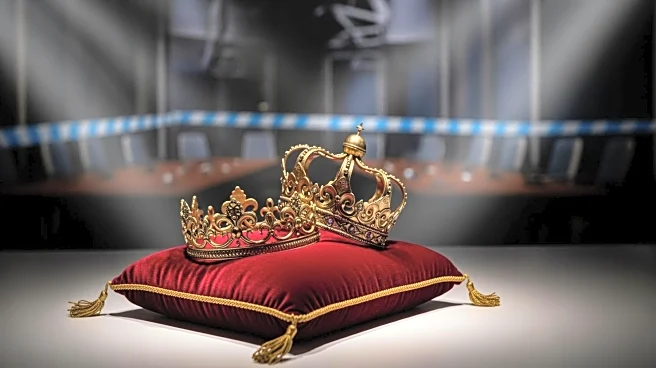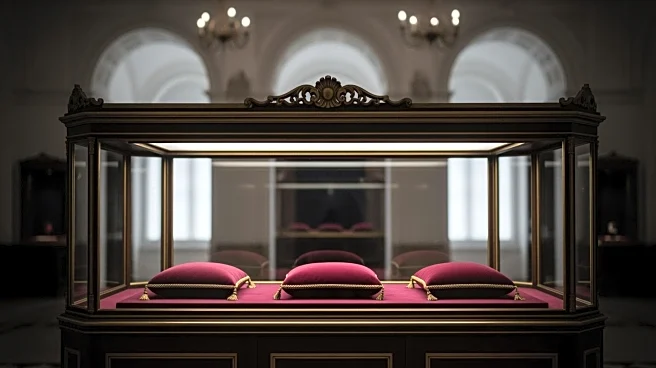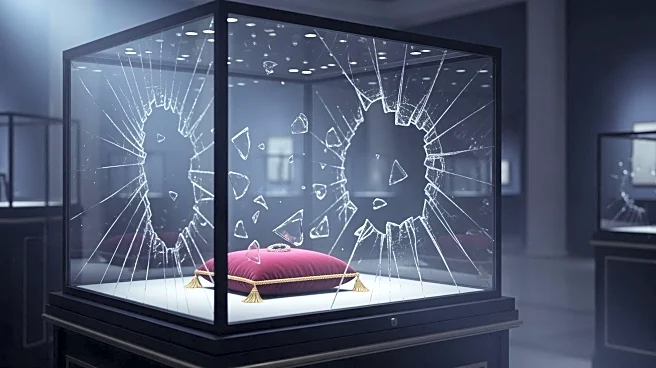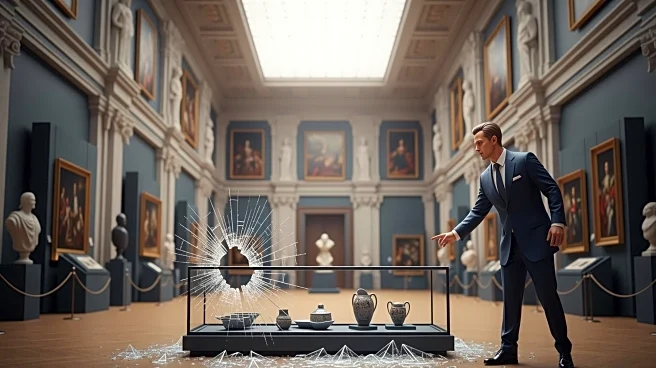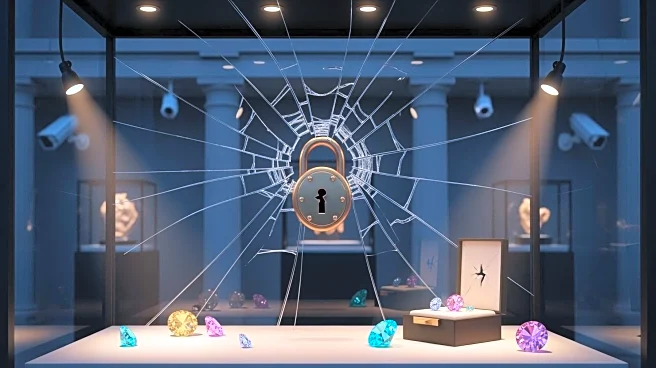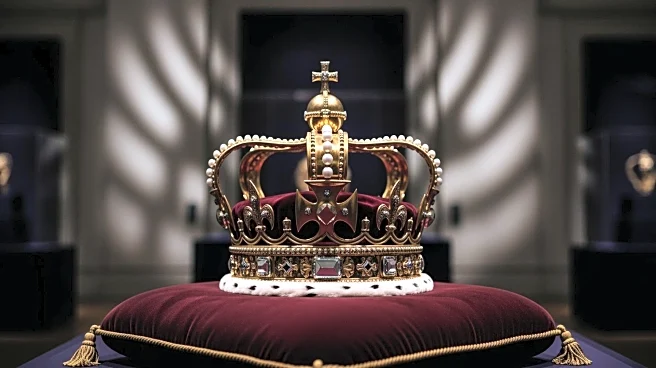What's Happening?
French police have arrested two men in connection with the theft of crown jewels from the Louvre Museum in Paris. The heist involved four thieves who used a furniture-lift truck to access the museum's
Galerie d’Apollon, where they stole eight pieces of jewelry, including items of significant historical value. The stolen jewels are estimated to be worth 88 million euros ($102 million). One suspect was apprehended at Paris Charles de Gaulle Airport while attempting to leave the country. Investigators are working to recover the stolen items and locate all perpetrators involved in the organized theft.
Why It's Important?
The theft of crown jewels from the Louvre represents a significant breach of security at one of the world's most visited museums, raising concerns about the protection of cultural heritage. The incident has struck at the heart of France's national pride, as the stolen items hold immense historical and emotional value. The arrests are a critical step in addressing the theft, but the potential loss of these artifacts could have lasting impacts on cultural preservation. The case highlights the need for enhanced security measures at cultural institutions and the importance of international cooperation in recovering stolen art.
What's Next?
French authorities will continue their investigation to recover the stolen jewels and apprehend the remaining suspects. The case may lead to increased security protocols at the Louvre and other museums to prevent similar incidents. French President Emmanuel Macron has vowed to recover the works and bring the perpetrators to justice, indicating a strong governmental response. The investigation may also involve international collaboration, given the suspects' attempt to flee the country. The cultural community will be closely monitoring the situation, hoping for the safe return of the stolen artifacts.
Beyond the Headlines
The theft raises ethical questions about the security of cultural heritage and the responsibilities of institutions to protect historical artifacts. The incident may prompt discussions on the balance between accessibility and security in museums. Additionally, the potential destruction of the jewels for resale purposes highlights the darker side of art theft, where cultural items are reduced to mere commodities. The case could lead to broader conversations about the global art market and the measures needed to prevent the illicit trade of stolen artifacts.



